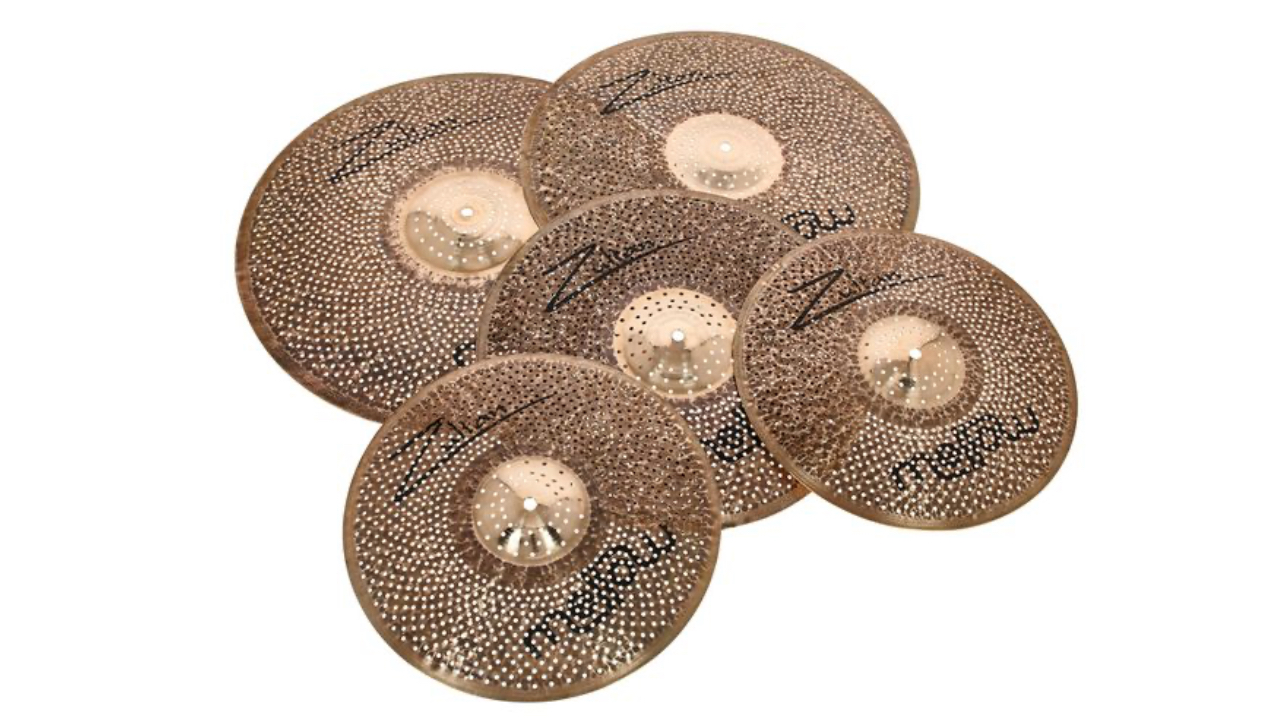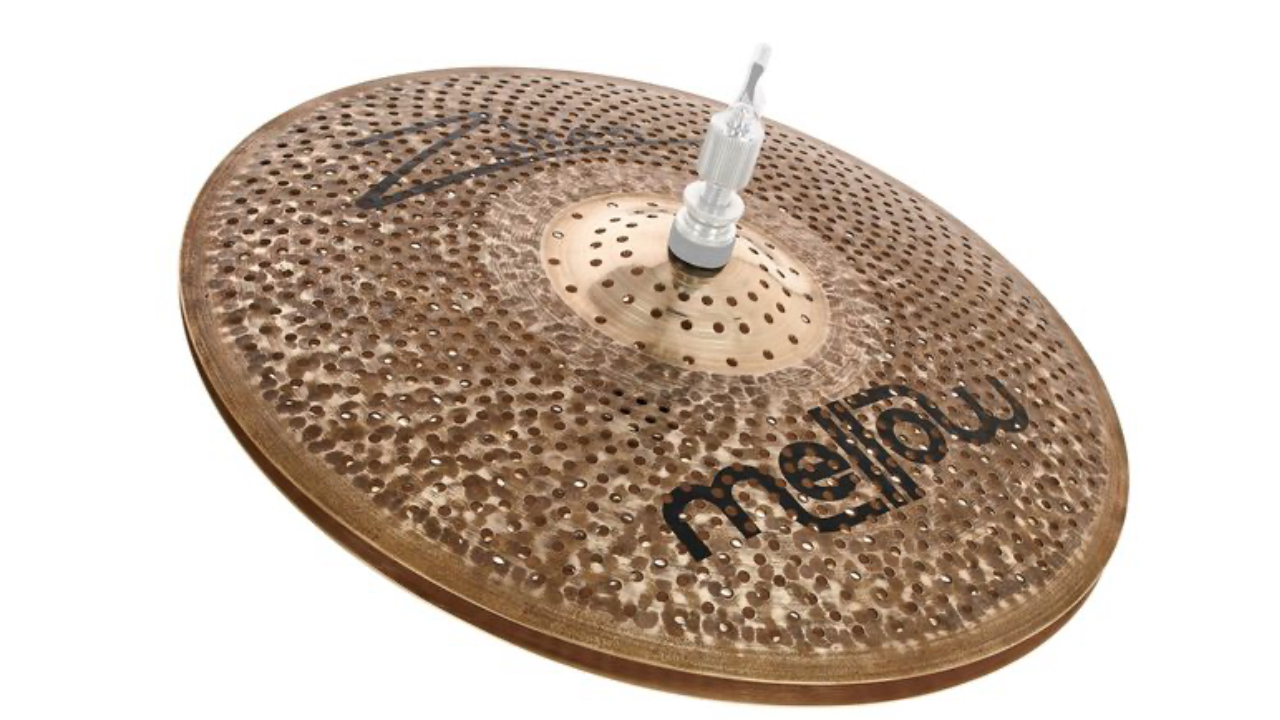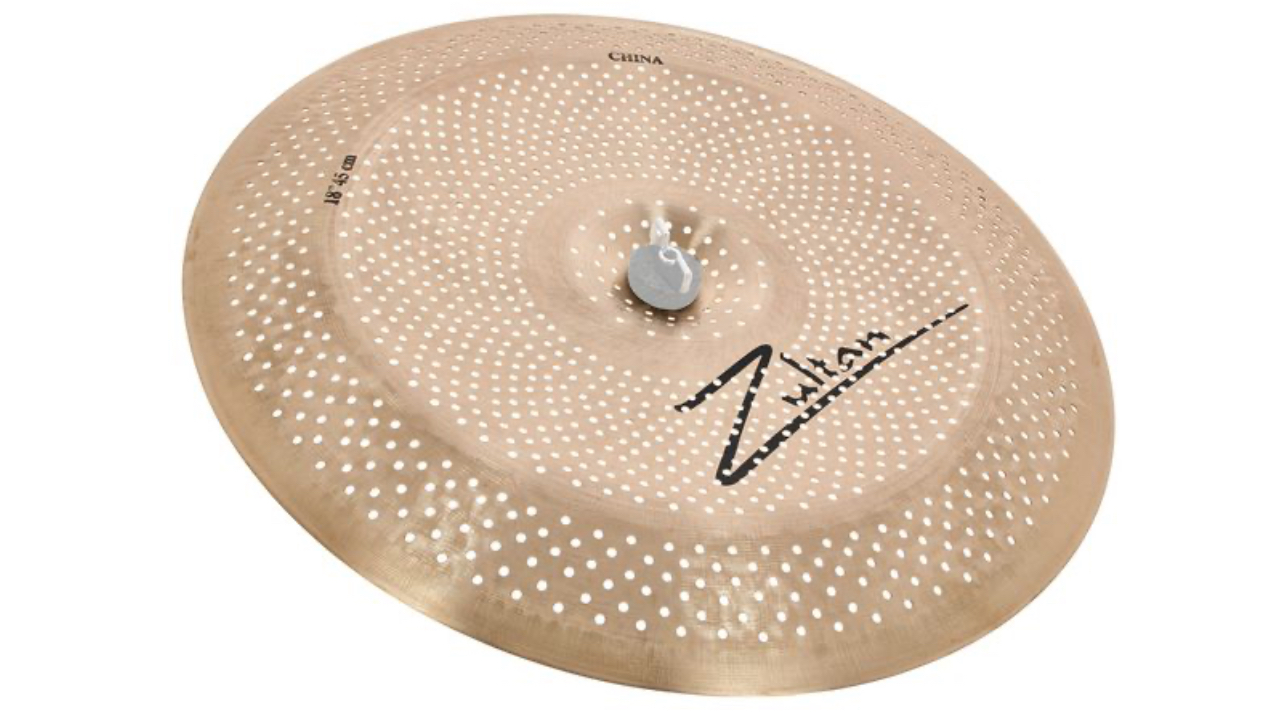MusicRadar Verdict
Low-noise cymbals that bridge the gap between cheaper practice models and traditional cymbals.
Pros
- +
Volume-reducing, musical sounds, traditional finish
Cons
- -
If you're buying a whole set it's a fairly hefty outlay
MusicRadar's got your back
Zultan Mellow cymbals: What is it?
There’s a cruel irony involved in being a drummer. You spend years honing your technique and carefully selecting and perfecting your sound, only to be told “You’re too loud, here’s a cajon.”
But, in an era where home practice risks upsetting your neighbours, and live performances are governed by public noise restrictions and — in the worst cases — noise-limiting devices, drum brands have made some big strides in recent years to help us avoid having to bang on a wooden box.
This extends to our cymbals too, which given their frequency range, tend not to travel too far beyond the room (or at least building) we’re playing in like say, our bass drum does. Instead, cymbals can be a more immediate problem - crashes need to be struck hard enough to make the sound bloom, open hi-hats can be overbearing and the wrong type of ride cymbal can also dominate in quieter musical settings.
Zultan’s Mellow line of cymbals looks to tackle this problem. To the casual eye, the Mellow series look like practice cymbals that you might be familiar with. They’re usually made of stainless steel, and with hundreds of small perforations, resemble a pre-production colander blank.
The Mellow series, however, is handmade in Turkey from B20 bronze - that’s the same alloy as your regular, higher-end cymbals. However, the theory goes that by borrowing the concept of mesh heads or practice cymbals, and applying them to a material that we’re used to hearing, we should get the benefits of bronze, combined with a 30% reduction in volume.
Zultan Mellow cymbals: Performance and verdict

The range is split into five categories: ride, crash, China, hi-hat and splash cymbals, with multiple size options in each. That’s a 22”, 20” or 18” for the rides; 20” 18”, 16” 14” crashes; 18” and 16” Chinas; 13” and 14” hi-hats, and 12” and 10” splash options.
Zultan also offers the Mellow series in two pre-configured sets: Professional (20” ride/18” & 16” crashes/14” hi-hats) and Jazz (18” ride/16” crash/13” hi-hats). For this review, Zultan sent us the Professional set, plus an additional China, but all of the cymbals mentioned above are available individually, with prices starting at £96 for a 10" splash, and ranging to £246 for a 22" ride.
Want all the hottest music and gear news, reviews, deals, features and more, direct to your inbox? Sign up here.

There’s a potential preconception to get over here, because the sheer number of holes immediately makes us think of the practice cymbals we mentioned earlier. The first thing (other than all the holes) that you’ll notice about the Mellow cymbals is the raw finish to the bow of each cymbal. By contrast, the bells have been lathed to a brilliant shine, and overall it gives them a more expensive look.
There’s a definite sound theme running throughout each cymbal. Those holes certainly dry-out the performance of each, so our first strikes yield a strong attack. It’s smoother than the plastic-y clack that the Mellow’s hole-y practice cousins deliver, most likely thanks to that B20 bronze. we’d actually go as far as saying that it’s more of a perceived bump in the attack part of the sound owing to the drop in sustain and faster decay.
This is most noticeable on the ride cymbal, where bow strikes evaporate before there’s a chance for any wash to build up. If you require more sizzle then you might consider attaching a chain, but the flip-side of this is that it will perform very well for styles of music where you want to remain quieter, but still achieve good note definition, which it has in spades.
With that in mind, crashing the ride is predictably dry too, meaning you’ll need to give it a fairly hard hit in order to get it to bloom into a full crash sound. Meanwhile, the bell reacts exactly as you’d expect, maintaining the same dry clarity as the bow. It’s easy to control and of course, goes pretty loud if you hit it hard, but there’s really no need to.

The hi-hats exhibit a similar sort of feel. Closed tight there’s a strong ‘chick’ sound, but without some of the obvious weight. This continues to the semi-open and bark sounds, where traditional hi-hats can become brash and fatiguing. Here though, it’s a far less traditional sound, almost like a hi-hat that’s been heavily EQ’d or filtered, there’s a distinct high-end sizzle to the notes, with a lot of the frequencies which cause our hats to become overly loud scooped-out. There’s an electronic type edge to them, and we wouldn’t be at all surprised to see people using these as an effects-style hi-hat.

The crashes are the most familiar - there is still some of that scooped/filtered character, but they rise to a full crash sound without too much persuasion from our hits. As you might expect by now, there’s a speedy response, it’s not as trashy as an effects cymbal, but with harder hits it does start to reveal a hint of that white noise tonality.
Perhaps the most intriguing is the China, which by definition as a cymbal commonly used for accents and staccato crash/ride cymbal is one of the loudest and brashest voices available to us in our regular cymbal palette. For metal players, that makes total sense, but if you’re looking for China sounds in a quieter setting, you’ll usually need to resort to something a bit thinner.
Put hundreds of holes in a China, though, and there’s the potential to get that throaty sound at lower volumes. That’s basically what’s going on here - it’s trashy, yet still dry, and while it definitely makes its presence felt in terms of volume (possibly throwing the brief out of the window slightly), it’s definitely a much more forgiving experience than our super-bright, super-loud regular China.
Verdict
So, the Mellow series succeeds at its mission: it gives us a useable cymbal sound that while definitely not ‘traditional’, isn’t too far left of centre. They’re not the same as loud practice cymbals, nor do they sound like our unperforated metals. They lie somewhere in between.
These definitely fulfil their purpose of reducing your cymbal volume, and as we mentioned, in some cases give a tonality in their own right. The only drawback is the potential outlay - if you already own an expensive set of cymbals, you’ll probably need a strong case to justify buying an entirely new set unless you’re playing in a lot of situations where louder cymbals are a problem.
That said, the fact that each model is available individually could mean that you only replace the louder of your usual cymbals and use the Mellow as a substitute when required. It’s a question of what, where and how often you’re playing.
Zultan Mellow: Hands-on demos
Zultan
Drums Bonedo
ZebenDrums
Specifications
Alloy: B20 Bronze
Origin: Turkey
Ride cymbals: 22", 20", 18"
Crash cymbals: 20", 18”, 16”, 14”
Other: 16”/18” China, 10”/12” Splash
Hi-hats: 13", 14"
Availability: Professional and Jazz sets, all cymbals available individually
For more information, visit the Zultan website. To check the latest prices, visit Thomann.

Stuart has been working for guitar publications since 2008, beginning his career as Reviews Editor for Total Guitar before becoming Editor for six years. During this time, he and the team brought the magazine into the modern age with digital editions, a Youtube channel and the Apple chart-bothering Total Guitar Podcast. Stuart has also served as a freelance writer for Guitar World, Guitarist and MusicRadar reviewing hundreds of products spanning everything from acoustic guitars to valve amps, modelers and plugins. When not spouting his opinions on the best new gear, Stuart has been reminded on many occasions that the 'never meet your heroes' rule is entirely wrong, clocking-up interviews with the likes of Eddie Van Halen, Foo Fighters, Green Day and many, many more.
